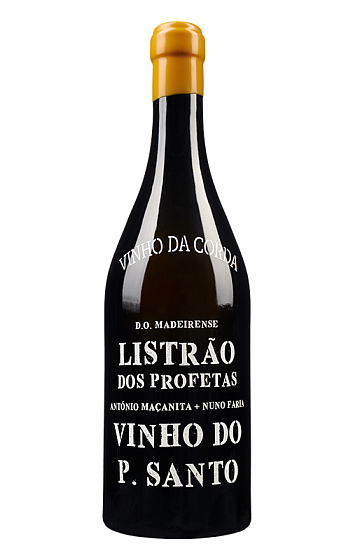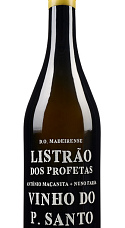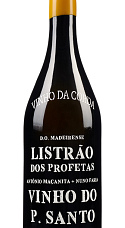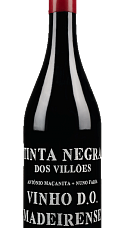Listrão Vinho da Corda 2020
Descripción
Primera añada de este blanco no fortificado, elaborado a partir de Listrão, variedad también conocida como Palomino fino. El Vinho da Corda es aquel resultante de la vinificación del mosto más concentrado y de color dorado obtenido tras el tercer y último prensado de estas uvas. Antiguamente el proceso se hacía mediante una prensa hecha con cuerda, de ahí el nombre. Tras su envejecimiento en barricas muy viejas que contuvieron vino de Madeira surge esta suerte de "madeira natural" sorprendente.
Ficha técnica
Cata
Viñedo y elaboración
Opinión de los críticos
The 2020 Listrão dos Profetas Vinho do P. Santo Vinho da Corda is all Listrão (a.k.a. Palomino Fino) aged for 12 months in very old Madeira wine casks from Blandy's (where these were bottled). It comes in nicely dry (1.5 grams of residual sugar and 7.3 of total acidity) and at 14.3% alcohol. This is basically the same wine as the regular this issue, except for that "Vinho da Corda" part. Only the last pressing, about one-third of the juice, was used for this fermentation. António Maçanita said that this is locally known as Vinho da Corda, meaning “wine of the rope.” That, he said, was the old pressing system where the cage was made of rope, relating to the last squeeze of the press, which was "perceived as the best pressings for the 'Porto Santo Wine' style that is a kind of natural Madeira wine without any fortification." That Vinho da Corda vinification matters a lot. This is completely different than the regular bottling, that's for sure, as Maçanita's description suggests. This has the feel of a fortified wine in richness (although it's not). If someone guessed it was a dryish White Colheita Port or Madeira, they'd be ignoring a few things, but there are some echoes. Maçanita said to me that this was the way the locals did their unfortified, high alcohol wines, with only the ripeness of the grapes. "I am very excited with this because we might [be] tasting what Madeiras [were like] before fortification started in the mid-17th century!" The color is several shades darker than the regular Listrão, and the power is more substantial too. The finish is simply gripping. It never seems unbalanced, though, because the richness counters the power easily. If you're looking for a white table wine, this is, to be sure, something of an outlier compared to the regular, which is a normal table wine. Those who love Vinho da Corda will think it is sensational. I suspect some will think this is not really what they are looking for. At the least, how you use it will be different. This would work well on its own and also pair well with rich foods. It should age rather well, but since there is no track record for this debut bottling, let's take that in stages and start here. It drinks great today, in case you are wondering.








Añadas: 2021 2020
Esta añada no tiene valoraciones todavía. Pincha en las otras añadas para ver sus valoraciones.
Esta añada no tiene valoraciones todavía. Pincha en las otras añadas para ver sus valoraciones.